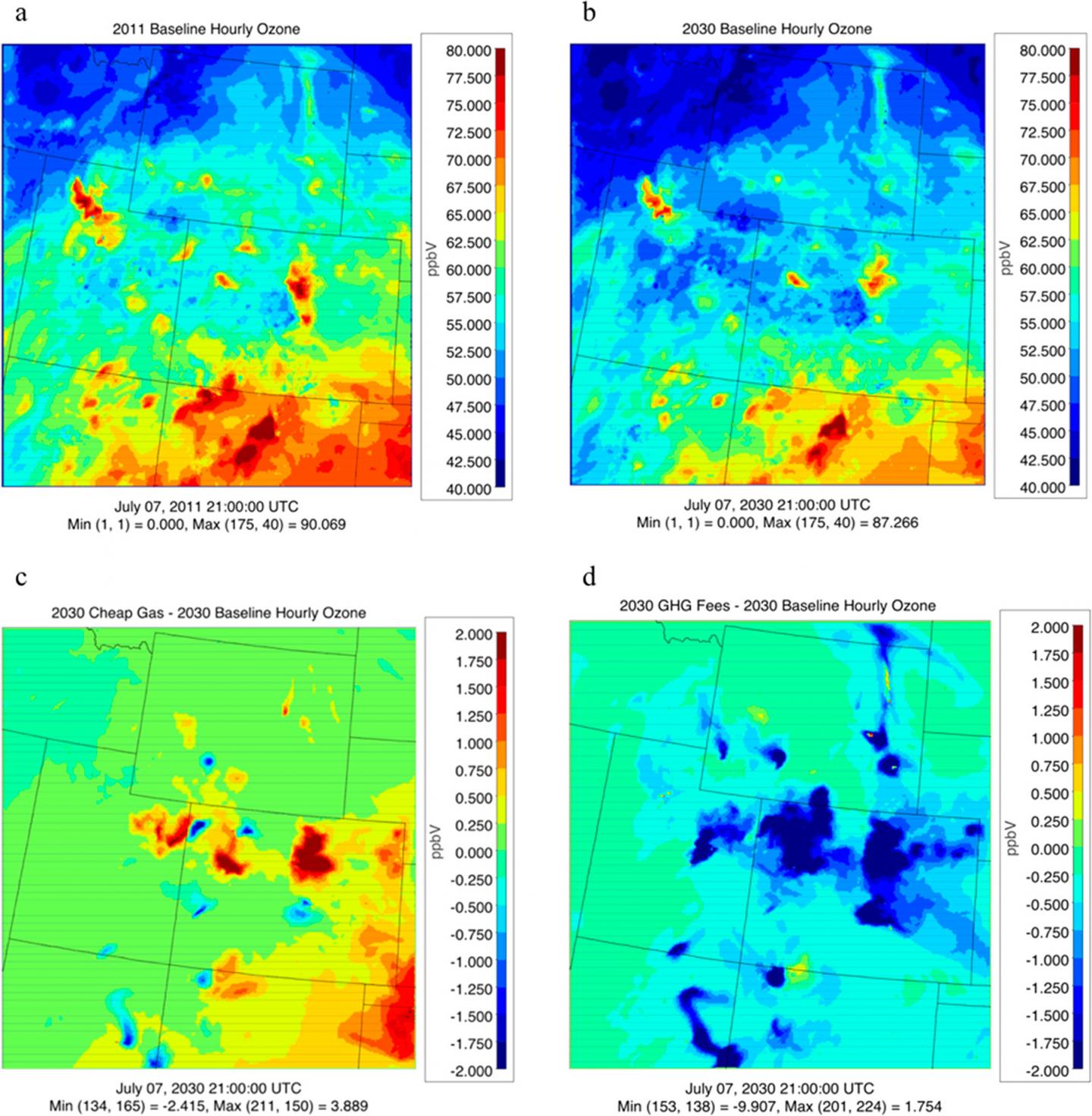As Rocky Mountain region plans its energy future, study suggests reigning in greenhouse gas emissions will save hundreds of lives and billions of dollars

Credit: Drexel University
Research by Drexel University and the University of Colorado at Boulder suggests that imposing fees on energy producers that emit greenhouse gas could improve the health and financial well-being of the Rocky Mountain region.
Using sophisticated modeling programs that can project atmospheric concentrations of ozone, a ground-level pollutant, by considering factors like current emissions from power plants, weather trends and changes in energy production, the team compared the effects of four scenarios on the Rocky Mountain region of 2030. Their findings were recently published in the journal Environmental Science & Technology.
Looking closely at coal, oil and natural gas production regions in Colorado, Utah, Wyoming and northern New Mexico – a region in the midst of planning its energy production transition over the next several decades – the team proposed four energy production policy scenarios, any of which could very well be in effect by 2030.
“Opportunities to produce power through newly accessible oil and gas as well as renewable resources have increased rapidly in the Rocky Mountain region, which has a growing population,” said Shannon Capps, PhD, an assistant professor in Drexel’s College of Engineering who helped conduct the research. “The region needs more electricity and has choices about how to produce it. This analysis helps people understand the implications of different choices, some imbedded in infrastructure that will shape climate and air quality in lasting ways.”
The first is a baseline scenario in which current transitions away from coal energy and toward natural gas, including the planned closing of several coal plants and the creation of new natural gas extraction sites, are taken into consideration.
Two scenarios consider the effects of changes in the cost of energy production from natural gas – either that it will be more expensive to produce than coal or that it will continue to be less expensive.
The final scenario considers the possibility of fees being imposed on the producers of greenhouse gas – a policy that has been proposed by the previous administration’s Clean Power Plan and proponents of the Green New Deal.
The group used recent results from energy grid modeling under the different scenarios to calculate realistic emissions of greenhouse gases – carbon dioxide and methane -, sulfur dioxide, nitrogen oxides, volatile organic compounds (VOCs) for atmospheric modeling programs that determine the associated amount of ozone. The team then employed a tool created by the Environmental Protection Agency to determine how the ozone in each scenario would affect the health of people in the region and also calculated the social costs of the associated greenhouse gas emissions.
Their research predicts that in all scenarios, other than the one in which natural gas production becomes less costly, greenhouse gas emissions would be reduced following the closure of plants – whether by planned retirement – in the 2030 baseline scenario – or as a cost-saving measure – in the “expensive gas” and “greenhouse gas fees” scenarios.
While this might not be a surprising finding at this point in our collective understanding of energy production and sustainability, the health and financial ripple effects of these changes are stark, according to the research.
“The reduction in ozone from 2011 to the 2030 baseline scenario is estimated to reduce total mortalities (sum of short-term and long-term mortalities) by about 200 annual deaths,” according to the study.
Metrics that associate an economic impact with mortality rate calculate that the health benefits of this scenario would equate to $2 billion.
Mortality rates continue to improve under a scenario where fees are imposed on producers of greenhouse gas, along with an additional economic benefit of $200 million.
Conversely, if gas prices were to fall – resulting in greater use of it, and increased emissions – the model predicts a spike in mortality rate that correlates to an $80 million reduction in the economic gains expected by 2030.
The study highlights the difficult decisions facing policymakers when it comes to sourcing energy. For example, while shifting away from coal consumption toward natural gas and oil reduces carbon dioxide emissions, those benefits are offset by an increase in methane, sulfur dioxide and VOCs associated with the extraction and use of those sources.
A policy that puts fees on greenhouse gas-emitting energy producers could be met with opposition, but it could also drive market forces toward greater use of energy from renewable sources like wind and solar, which are abundant in the region – with the co-benefit of reducing emissions from gas and oil operations.
“This type of research continues to be important as other regions in the U.S. and abroad have access to similar technology for oil and gas extraction, as well as renewable energy production. The outcomes of this study ought to drive careful consideration of those choices,” Capps said.
###
In addition to Capps, this research was conducted by Rene Nzanzineza and Jana B. Milford from the University of Colorado at Boulder. It was supported by the National Science Foundation.
Media Contact
Drexel University
[email protected]
Original Source
https:/
Related Journal Article
http://dx.




